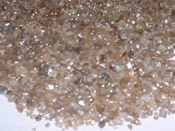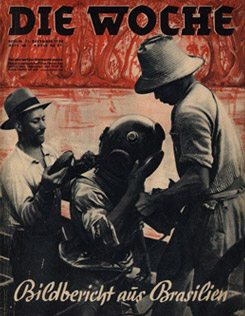Brazil, officially the Federal Republic of Brazil, is located in South America. It comprises the eastern half of the continent and groups of small islands in the Atlantic. Its current capital is Brasilia, and the federation contains 26 states and more than 5,500 municipalities, despite its more than 192 million people, what makes Brazil the fifth most populous country in the world. The country has a low population density index, because of its high concentration of people along the coast, leaving a large demographical empty inside, which is diversely populated with Indigenous, European, African and Asian.
 Fig 1: Brazil map
Fig 1: Brazil map
São Paulo, Minas Gerais, Pernambuco and Bahia are the most populated states, while Amapá is the state with the smaller population, today.
Its surface is 8.5 million km2, located between the tropics, being the fifth largest country in the world, with more than 7.491km of coastline.
It has a very diverse climate, the vast Amazon rainforest covers over 3.6 million km 2 of its territory, the altitude of its territory is very moderate, and its topography consists of three major watersheds, the Amazon (northern third of the country ) the Brazilian Massif (more than two thirds to the south) and the Guiana Shield in the northern part.
The abundance of rainfall, in the North region (Amazonas, Acre, Pará...), the Midwest (Mato Grosso, Goiás ...) and the Southeast (Minas Gerais, Sao Paulo, Rio de Janeiro and Espírito Santo) have led to the formation of 12 large watersheds, and its major rivers Amazonas, Parana, Sao Francisco, Paranaiba, Paraguay and Uruguay, with their numerous tributaries and streams.
In past, the slave trade was one of Brazil's resources, since the cattle were scarce. Its most important natural resources are mining diamonds, gold, gems, emeralds, iron, magnesium, nickel, phosphorus, silver, etc. The country produces over 70% of its oil needs, and the electricity is also produced by the exploration of the rivers' flows.
Most rivers are plateau, featuring waterfalls and cataracts. The Amazon River, one of the most extensive in the world, being from 4-5 km to 50 km, in width up, and a length of over 6,800 km, has a really slow speed (between 2-7 km / hour).
One of these mythical places, is the region of Minas Gerais, a state of one of the 27 federal units with over 17 million inhabitants (Minas Gerais is a state), located in the Southeast region of Brazil with more than 580,000 kms2, limited by the states of Espirito Santo, Rio de Janeiro, Sao Paulo and Mato Grosso, to the south. Its capital is Belo Horizonte, with more than 5 million people, ranking second in the federated state population. Its cultural value includes the town of Ouro Preto, built in the eighteenth century, and the first in Brazil to be declared by UNESCO in 1980, as a World Heritage Site. The pseudonym: Historic Town of Ouro Preto.
Many of the great historical events in Brazil, had their epicenter in this region, like the Revolution (1930) and the discovery of gold mines (1707-1710) that triggered in the war of the Emboabas; the proclamation of the federation, in 1889, and the military state intervention, in 1964.
Ouro Preto, Para de Minas, Diamantina, Rio Acima are the eldest colonial cities. On their territory are the main headwaters of Brazil, since they have no outlet to the sea.

The main Area of Minas Gerais was explored by the portuguese colonizers, in 1720, under the names of Minas Gerais dos Goitacazes and Minas Gerais do Ouro Preto, while they were looking for gold, diamonds, gemstones and other precious minerals.
Brazil got no lakes, but it has lagoons and ponds, formed when the flood's water got stuck between the sediment's barriers, left by the rivers when they return to their normal flow.

These rivers with little current, dark waters and shallow depth, in the plains flooded by the rains, form areas that are prone to landslides, due to its composition of gravel and sand, with little alluvium.

To facilitate section, a stick like a pencil was used, thus leaving the popular phrase "write the cascalho".
In India, the diamond are found mainly in areas of ancient sandstones and conglomerates, probably at the silurids and masses of the rivers. In Brazil, in the state of Minas Gerais, the robes are found in a rock consisting largely of quartz and mica, in the states of Bahia, Goias and Mato Grosso, they exist in alluvial deposits and in the rivers' sand.
Minas Gerais's diamonds are relatively small, with high quality, of blue, white and yellow-red colours. Mato Grosso's diamonds are very hard, with a greasy look, also called carbonated diamond.
The word diamond comes from the Greek word adamas ("invincible") that was surely applied to any rock hard as corundum, known by the Romans in the first century AD, but until then, of Indian origin. In South Africa the diamond is found in the sands of the rivers and at the crateriformes depressions of the soil, it is full in a land of yellowish brown surface, and bluish gray depth, constituted by eruptive rock particles, analogous to the serpentine.


In 1726, diamonds were discovered in Brazil, and in 1866 in South Africa, that is now the leading producer of these gems. Famous Diamonds: Some diamonds have become historical, especially for their size, the largest of all is the Cullinan, discovered in the Premier Mine in South Africa in 1905, and was offered to Edward VII, weighed 3,106 carats before being cut, and was transformed in 105 gems. The Star of Africa, with 530.2 carats, is the largest faceted diamond in the world, the Vargas diamond, found in Brazil in 1938, weighing 726.6 carats rough, the Jonker, The Lesotho (1967), the Great Mongol, the Baptiste Tavernier, and the Koh-i-noor are among the most known by quality and size.
Search and industrial exploitation of diamonds, gold and gems have led to the emergence of large desert areas, the automation with numerous large rafts and suction pumps with high flow, working day and night in the headwaters of the great rivers (Amazonas), have left some rivers fishless, diverting its course, and the digging of wells, with the removal of alluvian lands, havs caused the desertification of zones that used to be fertile. This is the heritage we got from the boundless desire of power and money.
He was born on 08/08/1873, in Paris (France), emigrated to Brazil in 1896, later in 1904 founded the "Officina Mechanica Charles Person" in Sao Paulo, at only 320 miles from the capital Belo Horizonte, which was dedicated to the manufacture of propellers, rudders - for boats and costumes, pumps, helmets, diving suits, weights for divers.
Produced two types of Helmets:
This rig was composed of a copper helmet, fixed on a plate or perctoral, also made of copper. The helmet is attached to the chest by 12 screws/bolts. Between the helmet and breastplate, fastened with 12 screws/bolts, is the leather jacket that facilitates the formation of an air bubble inside the helmet and shoulders of the "garimpo" or diver. A rubber hose connects the helmet to the rotary pump, on the surface, usually on a raft, or on the shore. A lead weight of 25 kg is hung on the front and back of the helmet which ensures its negative buoyancy.
 Fig 9: Brasilian Person dive helmet |
The helmets were provided with a valve at the top for ventilation inside, (remove air) to avoid excessive concentration of CO2. Is also the air inlet or connection with the hose, others also had incorporated phones therein. (Fig 9)
The front window (front) is unscrewed as a standard helmet. Inside three conductors distributed on the incoming air side and center windows to prevent fogging.
The approx. weight is 14 kg to 15 kg. Four windows, a front one of 16 cm, the side ones with 11 cm, and a top one of 9 cm. They incorporate both the front and the back, two hooks for weights, in the front between the two locks of weights is the manufacturer's nameplate are not numbered and are unknown to date the number of SCUBA produced by Person. (Fig 8, 9, 10)
The jacket (Fig.11) as mentioned above, is fixed by 12 screws/bolts from the helmet and breastplate, usually leather or waterproof fabric, short sleeves and over the waist is topped by a belt, comprising several turns of a rope topped by a simple knot rapid fast.
 Fig 14: Nameplate |
 Fig 9: Nameplate |
The air pumps are very simple, single piston, without cooling and with two side flyers for hand operation. It was subsequently coupled pulleys to be driven by electric motors that are connected by a variable length hose to the top of the helmet, also have a nameplate (Fig 14).
Different labels correspond to different eras and generations diving suits, of the Person.
We believe that the oldest might be:
"Officina Mechananica, Charles Person, Rua Augusta Queriroz-9 to Sao Paolo.
The predominant use of the helmets, in 3m to 40m depths rivers, was for the finding of gems. We do not rule out various uses due to the large size of the Brazilian coast and its numerous rivers.
The Helmet Person was also used in other South American countries such as Venezuela and Bolivia.